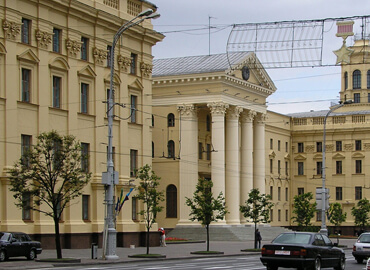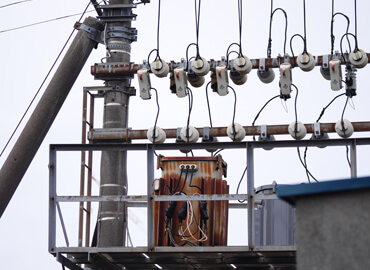More and more voices in Europe and the United State acknowledge that forced landing of EU-registered civil aircraft (with mostly EU citizens on board) was an act of terror, and act of piracy, or even an act of war against the EU. But there’s more to this story. 10 days after Raman was taken hostage, we have the image of how pro-Kremlin media used this case to divert and reshape the attention of the audience from the act of terror to the subject of terror.
Before we will move to Russia’s media engagement in this case, there has to be a brief disclaimer regarding the so called «interview» of Raman Pratasevich to state TV of Belarus. In our opinion, this is a record of hostage interrogation that falls under the definition of torture and inhuman treatment. The junta’s administration in Minsk, most likely, pointed out three goals that it expected to achieve: change of agenda (moving focus from the crime to ad hominem), demoralization of protests through public humiliation of popular protest leader, and minimization of sanctions by showing a «confession.»
The West should provide coordinated response to this inhuman act of terrorism which essentially is not different from hostage execution videos published by ISIS from locations across the Middle East and Africa. The EU, the United States, and all interested parties and international organizations should immediately impose the toughest regime of economic sanctions against the regime to ensure a total economic collapse of Lukashenka regime and repressive system in the short run (including sectoral sanctions, ban on land, air and water transit and cargo transportation for state-owned companies and businesses related to Lukashenka’s close circle, as well as personal sanctions against immediate regime beneficiaries among related businessmen in and outside Belarus).
Pratasevich’s wrists clearly showed deep bruises (highly likely signs of torture) and his behavior and appearance (preemptive responses, unusual excitement, the size of eye pupils) cause serious concerns about the use of special purpose chemicals against him. The organizers of this torture record – including Marat Markau and ONT filming crew – must face justice for crimes against humanity and inhuman treatment of a hostage.
How Russian propagandists created fake image of Pratasevich as a neo-Nazi
Since the very first days of the incident, Russian propagandists began a targeted information operation to impose disinformation about the forced landing and kidnapping of Pratasevich to the English-speaking audiences. According to iSANS findings, this operation was managed in the fashion similar to how it is usually done by Russian and pro-Lukashenka groups on Telegram. After anonymous channel drops misinformation, it is being picked by related media, and is later being legitimized to end up on major news outlets.
As early as May 23-24, Greek media affiliated with local left, socialists, and communist movement began to promote a narrative that Raman Pratasevich is a neo-Nazi who fought in Donbas as a part of Ukraine’s «Azov» volunteer regiment and is a long-standing ultra-right activist. The story escalated so fast that it was cited by CNN Greece on May 24.
Over the next few days, a wide range of Greek, Italian and French media repeatedly stated that Raman Pratasevich is a neo-nazi extremist that belongs to a radical far-right movement. Depending on particular outlet, the positions varied from basic «informing» about the personality of Pratasevich to endorsement of his kidnapping on social media accounts of left celebrities. Soon, similar publications were forced by a group of media and individuals with close ties to RT and Sputnik in the United States.
In most cases, foreign media outlets referred to (or used without reference) the same anonymous publication at anonymous website FoiaResearch that described Pratasevich as «a neo-Nazi regime change activist supported by the West».
The article may look legit to people unfamiliar with the context of Eastern Europe. But basic fact-checking proves it is misleading in its entirety and is created to impose a certain narrative. Raman is presented as a neo-nazi based on facts that he was photographing rallies of people in black clothes (who ended up being anarchists and left Antifa activists) and served in controversial Azov unit of Ukraine’s ministry of interior. Azov, however, officially confirmed that Pratasevich was enlisted as war reporter for their media unit and never participated in military operations.
Ukrainian journalist Denis Kazansky provided even more convincing proof that Pratasevich wasn’t fighting with the troops. In his post, he referred to the footage released by Ukrainians Internet TV channel Hromadske in March 2015. The video shows the battle in Shirokino. At time code 4:40 Raman Pratasevich is seen in the frame. He was slightly injured and received medical assistance. It is clearly visible that Raman is wearing civilian clothes – unlike Azov fighters around him.
FoiaResearch used photographs from 2017 anarchist rally against so-called «parasite law». The law imposed by the regime of Aliaksandr Lukashenka introduced a tax for all unemployed civilians. The images from this event were used to accuse Pratasevich of being a part of non-existent «black bloc». FoiaResearch claims that people in the photos are members of «neo-Nazi organization Black Bloc». This is an entirely made up subject that FoiaResearch used to discredit Pratasevich.
Although Raman is not present in photos, FoiaResearch claims his connection to an imaginary neo-Nazi group based on the fact Pratasevich was taking pictures of protesters as a photo journalist.
Similarly, FoiaResearch is using other images to create misleading subtitles and explanations to them. After small and medium new outlets publish this information, it was legitimized and went towards bigger media.
FoiaResearch failed to provide facts and grounded its article on loaded statements based on a few very controversial images. Nevertheless, it was cited widely by major Kremlin support groups in Russia, Europe and the United States as well as large media outlets and individual journalists in Greece, Italy, and France. The role of Greek media was particularly important in this case. According to alexa.com, 79,2 per cent of FoiaResearch visitors are from Greece.
FoiaResearch represents itself as «a nonprofit research platform that focuses on transnational relations of the far right, particularly neo-Nazi and paramilitary structures».
The publication about Pratasevich initially appeared on Foiaresearch on August 17, 2020 – slightly a week after the protests in Belarus started. It was later updated in the week after Pratasevich was taken hostage by the KGB.
So, who is behind the anonymous website that gained so much attention in the West in the case of Raman Pratasevich?
Who is FoiaResearch?
The website’s name, FoiaResearch, refers to the 1967 U.S. Freedom of Information Act (FOIA), a federal freedom of information law that requires the full or partial disclosure of previously unreleased documents. However, FOIA-related documents have little to do with publications on current affairs. Apart from some outdated publications from XX century American archives archived in a separate section, FoiaResearch is focused on criticism of the United States, the EU, and some undeniably ultra-right movements in both locations. But, most importantly, FoiaResearch is focused on systemic discreditation of Ukrainian politics and troops based on the Kremlin-formed narratives.
Foiaresearch website provides no information on its team, founders, or funding sources. However, our research shows it is may be affiliated with the Kremlin’s propagandistic network around RT and Sputnik in the United States.
The only traceable social media presence that Foiaresearch has is its Twitter account (@Foiaresearch) that was created in April 2019. Current records show that this account remained silent until December 2019 (or for an unknown reason all previous posts have been removed).
Since the very first publications, Foiaresearch Twitter account was covering the engagement of Ukraine in 2019 Hong Kong protests. An extremely niche topic for an independent U.S.-focused media outlet that covers ultra-right – to say the least. Later on, Foiaresearch twitter account will elaborate on this topic and will publish misinformation on the classical narratives of the Kremlin: the «nazification» of Ukraine, «nexus between Belarusian, Polish, and Ukrainian nationalists», «(neo-Nazi) black block agitators» and «neo-Nazi connections» of European journalists who cover protests internationally.
There is however a really weird thing about the content that indeed, has some coverage of neo-Nazi movements around the world (but mostly in Europe and in the United States). The administrator ignores huge ultra-right movement in Russia. The only legit mention of neo-Nazi movement in Russia by Foiaresearch Twitter is a marginal reference to Igor Girkin (Strelkov) in relation to him receiving prize from Franko Foundation in December 2014. Girkin, a former FSB official, played key role in Russia’s military intervention in Ukraine, but later became too popular, and became an informal pariah for the Kremlin.
A lot more cards were revealed as we studied the sources that Foiaresearch Twitter account retweets. Most initial publications and retweets were related to personalities and accounts associated with Russia’s government-funded outlets: RT and Sputnik. The most notable among them are the Grayzone (created in 2015 by controversial RT and Sputnik contributor Max Blumenthal), Mint Press News (another controversial media created in 2011 and engaged in promotion of RT and Sputnik publications in the West), Alan MacLeod (Senior Staff Writer at Mint Press News), Ben Norton (Assistant editor of the Grayzone News and close ally of Max Blumenthal), Morgan Artyukhina (writer and news editor who covers «imperialism and war» at Sputnik’s Washington, DC, bureau, who also contributed to Mint Press News) and Sarah Abdallah.
Among all these people engaged in pro-Kremlin propaganda, Sarah Abdallah is particularly interesting as she is believed to be a fictitious social media celebrity who appears online under various accounts since 2010. Sarah Abdallah posts pro-Russian and pro-Assad messages and is presumably traced to Hezbollah, the Lebanese shia organization that is engaged in Syria on the side of the Assad regime and is largely impacted by Iran.
A closer look at Mint Press News and the Grayzone gives a better image of Foiaresearch affiliations based on their Twitter account behavior. Both are characterized by pro-Russian and pro-Assad publications with specific focus on Ukraine and Syria (with strong anti-Ukrainian and anti-Israeli sentiments). Both focus on condemnation of what they call «American imperialism», but refrain from criticizing Russia’s military engagement in both countries.
The audiences and teams of both Mint Press News and the Grayzone gained a nickname «Sputnik Left» that refers to their leftist orientation and close ties with Russian government-funded propagandistic outlets RT and Sputnik. Both Mint Press News and the Grayzone promote Kremlin-led narratives in the United States.
Since its creation in 2011, Mint Press News (Mint Press, LLC) is widely criticized for its shady financial sources and controversial pro-Assad publications. In the early days of the Mint Press News, it’s founder (a 24-year-old Mnar A. Muhawesh) who claimed to seek transparency from the global powers only said her investors were «retired businesspeople» whom she preferred to not name. In 2019, Bellingcat reported that Mint Press News was funded through Serena Shim Award, an undisclosed prize financed by a pro-Assad lobby group in the United States.
Mint Press News claims in their public statement that the outlet is «a fiercely independent, reader-supported outlet, with no billionaire owners or backers». Nevertheless, the formal owners still hide their funding as more questions arise since the first filing forms for Mint Press, LLC keep the contact details of Odeh Muhawesh, Mnar Muhawesh’s father-in-law. Odeh Muhawesh is a graduate of Iran-based Islamic studies school and has broad connections in Iran, Iraq, Jordan, and particular interest in Syria, according to BuzzFeed.
In the last decade, Mint Press News has been widely criticized for its poor factchecking, the use of conspiracy websites as sources of information, creation of intentional misinformation on Syrian conflict, and promotion of RT and Sputnik publications. Mint Press News stands as firm supporter of both Sputnik and RT on American soil in their public statements.
A number of Mint Press News controversies has been widely exposed on the New York Times, BuzzFeed, Foreign Policy, and other major outlets (including a gigantic scandal about the alleged involvement of anti-Assad rebels’ in chemical attack that was publicly quoted by Russia’s foreign minister Sergey Lavrov).
Mint Press News is often referred to as «fringe website», although it is used to endorse and promote pro-Kremlin and pro-Assad narratives in the United States and English-speaking communities outside the U.S. and is explicitly left-leaning.
In June 2020 Twitter suspended the Twitter account of Mint Press News, but it was later recovered after the incident.
The Grayzone is an outlet with similar image of apologists to authoritarian regimes around the world (including China, Belarus, Syria, Venezuela, and Russia).
The Grayzone was founded by Max Blumenthal (accompanied by his close friend Ben Norton who is still a part of the Grayzone along with Blumenthal’s wife, a former RT employee). Both Blumenthal and Norton were explicitly anti-Assad until 2015. Surprisingly for the media market, Blumenthal and Norton turned pro-Assad after Blumenthal attended RT’s luxury Gala in Moscow for RT’s 10th anniversary. Despite past work, Blumenthal’s post-2015 work is widely criticized for hardly being journalism, serving pro-Assad propaganda being anti-Semitic and anti-Israeli on many occasions.
Just like in case of Mint Press News, the funding of the Grayzone is reffed to as «opaque» and «shady» while the outlet itself claims being «a totally independent journalistic initiative that does not take money from any government or government-backed group or individual». Just like the Mint Press News, the Grayzone was criticized for a major disinformation story. Here, it was penned by an author who never existed.
The founder of the Grayzone, Max Blumenthal, was criticized by his colleagues for his role in promotion of a provocation led by RT contributors against the supporters of Syrian White Helmets in New York’s Grand Central in 2017. In 2018, factual mistakes in Blumental’s story exposed a journalist from Nicaragua who was forced into exile due to fake allegations.
Blumenthal’s partner Ben Norton unleashed his condemnation of a «coup led by the West» in Belarus since the first days of August 2020 protests. He was condemned by the local media community for promotion of fake story about the death of Aliaksandr Taraikouski. Norton, just like all Kremlin media, claimed that Taraikouski «died after he tried to throw a «grenade» at police to kick off a violent riot» and wrote that Taraikouski «wasn’t very smart» as «the grande blew up in his own hand and he died». As of June 2021, Norton has removed his Twitter publication with these misleading statements.
Norton, too, was among the first to publish an extensive article about Raman Pratasevich as a «far-right activist» with «extensive ties» to various «right-wing extremist organizations» and «neo-Nazi black bloc forces in Belarus» (which ironically never existed). In his numerous publications and posts, Norton repeatedly refers to the publication at Foiaresearch, the anonymous propagandistic outlet that – what a lucky coincidence – retweets Norton among the first people on their Twitter and even publishes his interview on their pretty niche website.
With all controversy behind particular soldiers of Azov, Norton repeats the narratives of the Kremlin’s propaganda and labels Pratasevich a neo-nazi only because the latter served in the media service of an official military unit of the National Guard of Ukraine that was ironically funded by Ukrainian Jewish businessman Ihor Kolomoyskyi.
Norton uses loaded language, and in some instances repeats the narratives of strana.ua – a Russian-language pro-Kremlin web resource targeting Ukraine. In the early days of Belarus peaceful revolution, Norton referred to Franak Viacorka’s coverage of events in Belarus an «extremely stupid Belarus coup propaganda».
He also endorsed the publication of the Grayzone editor Max Blumenthal and claimed the UK Foreign Office used «Belsat as a key weapon in a Western government information war operation targeting Moscow, its allies, and Russian speakers in Belarus and Ukraine». In February 2021, Twitter gave a warning to the Grayzone account for using hacked materials in this publication.
Norton repeatedly states in his Twitter posts and publications that Pratasevich is a «neo-Nazi» or «a Nazi» – without, however, providing any facts to prove it (other than repeating misleading our untrue information from Foiaresearch website). The language in both FoiaResearch publication and Norton’s writings is pretty outstanding. Both are characterized by long sentences with lots of details and adjectives. Could it be that Norton is the person behind the original publication at Foiaresearch? Hopefully, he will provide the answer very soon.
Материал доступен на русском языке: Расследование iSANS об операции по дискредитации Романа Протасевича











